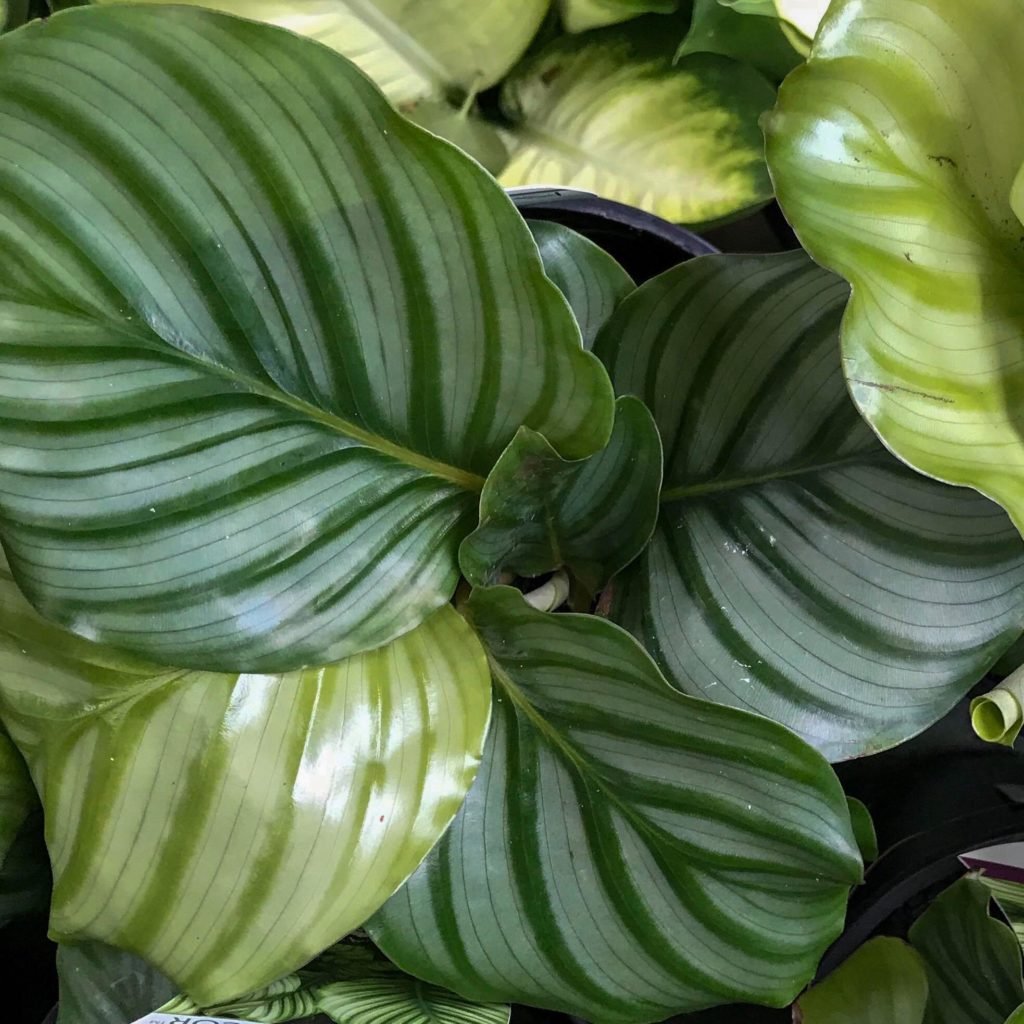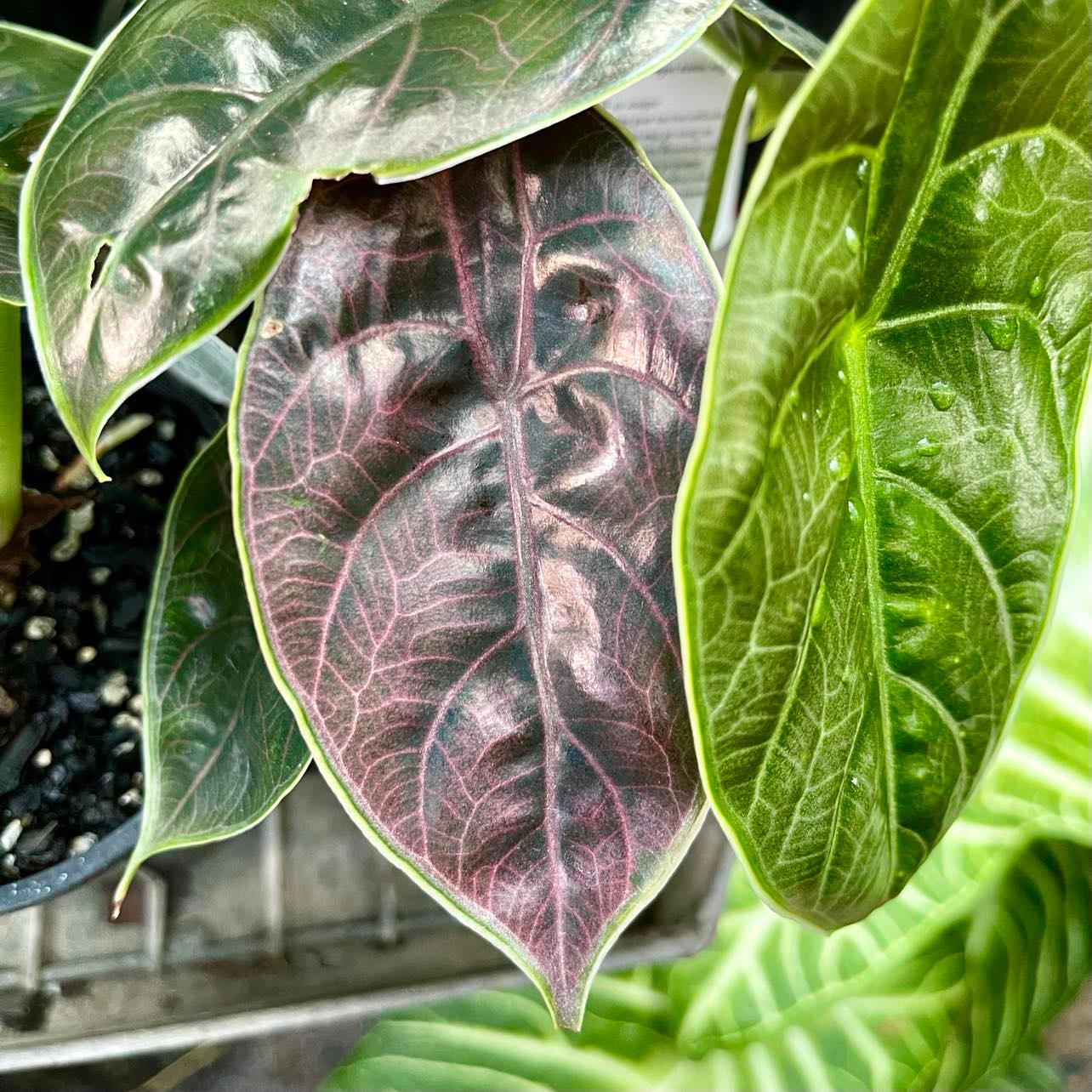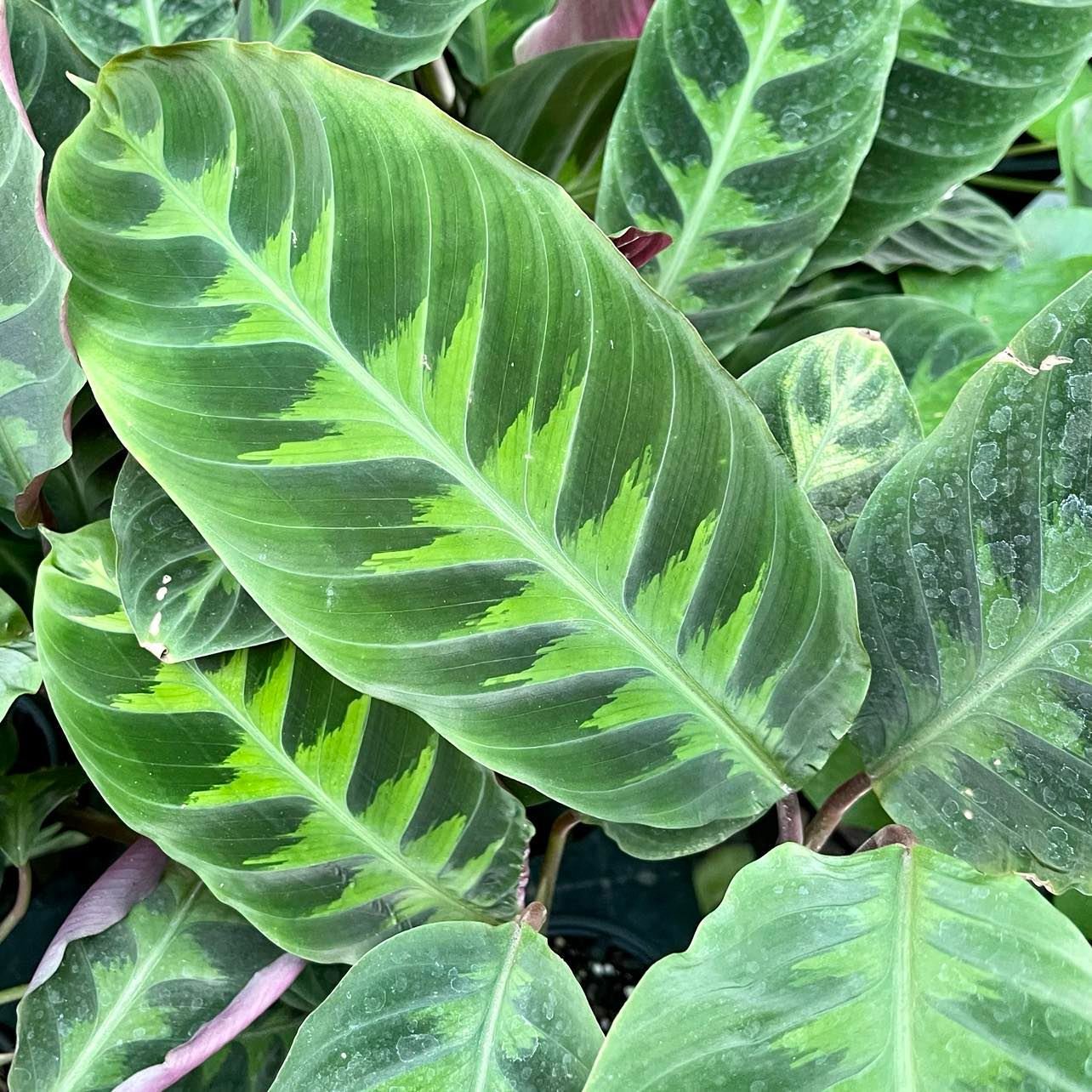Calathea Orbifolia, a stunning tropical plant known for its large, round, and intricately patterned leaves, is an ideal choice for elevating the aesthetics of your indoor space.
In this guide, we will go through everything you need to know about caring for this plant, from light and humidity requirements to common problems and their solutions.

Calathea Orbifolia Quick Care Overview
| Full Size | 2-3 feet |
| Light | Medium indirect |
| Temperature | 65-75˚F (18-24˚C) |
| Humidity | High |
| Cost | $ |
| Care Level | Medium-high |
| Toxicity | Non toxic |
Identification
Calathea Orbifolia can be easily identified by its large, round leaves that feature striking silvery-green stripes on a dark green background. The leaves can grow up to 12 inches in diameter, and they gracefully arch from the plant’s central stem.
Similar indoor plants include other Calathea species, such as Calathea Medallion or Calathea Rattlesnake, which also exhibit fascinating leaf patterns and identical care requirements.
Size
Calathea Orbifolia is a relatively compact plant, typically reaching a height of around 2 to 3 feet. Each leaf can grow up to 12 inches in diameter, giving the plant a lush and full appearance.
The plant’s growth is primarily focused on producing new leaves, which unfurl from the center of the plant in a spiral arrangement. With proper care, your Calathea Orbifolia will become a stunning focal point in your urban jungle, drawing the eye with its elegant foliage.
Light Requirements
Calathea Orbifolia thrives in bright, indirect light. Direct sunlight can scorch its delicate leaves, resulting in brown spots or faded colors.
Ideal locations for this plant include north or east-facing windows or a few feet away from a south or west-facing window. If natural light is limited, consider using a grow light to provide supplemental lighting for your Calathea Orbifolia using grow lights.
Temperature Requirements
Calathea Orbifolia prefers temperatures between 65-75°F (18-24°C). Keep your plant away from drafts, air conditioning vents, or heating sources to avoid sudden temperature fluctuations, which can cause stress and negatively impact the plant’s health.
During the winter months, ensure that the room temperature does not fall below 60°F (15°C) to prevent cold damage.
Humidity Requirements
High humidity is crucial for Calathea Orbifolia, ideally above 60%. Low humidity can result in brown leaf edges or curling leaves.
To increase humidity, place your plant on a tray filled with pebbles and water, use a humidifier, or group it with other humidity-loving plants. Regularly misting the leaves with distilled or filtered water can also help maintain humidity levels.
Watering Requirements
Calathea Orbifolia requires consistently moist soil but is sensitive to overwatering. Water your plant when the top inch of soil feels dry to the touch, using room-temperature distilled, filtered, or rainwater.
Water requirements may vary based on the season, with the plant needing more frequent watering during the warmer months and less during the cooler months.
Overwatering can lead to root rot, while underwatering may cause drooping leaves. Always use a well-draining pot with drainage holes to prevent waterlogged soil.
Fertilizing Requirements
Fertilize your Calathea Orbifolia every 4-6 weeks during the growing season (spring and summer) with a balanced liquid fertilizer diluted to half-strength.
Over-fertilizing can cause brown leaf tips or edges, so it’s essential to follow the recommended dilution and frequency. During fall and winter, when the plant’s growth slows down, withhold fertilization.
Soil Requirements
Calathea Orbifolia thrives in a well-draining, peat-based potting mix that retains moisture without becoming soggy.
A mixture of equal parts peat moss, perlite, and potting soil works well. You can also add a small amount of compost or worm castings to provide additional nutrients and support healthy root growth.
Repotting
Calathea Orbifolia may need to be repotted every 1-2 years as it grows. Choose a pot that is 1-2 inches larger in diameter than the current one and has drainage holes. Repotting allows for fresh soil, encourages healthy root growth, and provides the opportunity to address any root or pest issues.
Diseases & Pests
Calathea Orbifolia can be affected by common indoor plant diseases and pests, such as:
- Spider mites: Tiny pests causing speckled leaves and webbing. Treat with insecticidal soap or neem oil.
- Mealybugs: White, cottony insects that cluster on leaves and stem. Remove with a cotton swab dipped in rubbing alcohol or treat with insecticidal soap or neem oil.
- Aphids: Small, sap-sucking insects that cause deformed leaves and sticky honeydew. Treat with insecticidal soap or neem oil.
- Fungus gnats: Small, dark-colored flies attracted to damp soil. Allow the top layer of soil to dry between waterings, and use a soil drench containing Bacillus thuringiensis (Bti) to control larvae.
- Root rot: Fungal disease caused by overwatering or poor drainage. Ensure well-draining soil and avoid overwatering.
Leaf Cleaning
Regularly clean the leaves of your Calathea Orbifolia to remove dust and maintain their appearance. Gently wipe the leaves with a damp cloth, using distilled or filtered water, to avoid leaving mineral deposits.
This not only keeps your plant looking fresh but also helps it absorb light more efficiently.
Pruning
Occasional pruning will help maintain your plant’s shape and overall health. Remove yellowing or dead leaves by cutting them off at the base of the stem, using clean, sharp scissors, or pruning shears. This promotes new, healthy growth and prevents the spread of diseases.
Acclimation
If you’ve recently acquired a Calathea Orbifolia or moved it to a new location, allow the plant some time to adjust to its new environment.
It’s not uncommon for plants to experience some leaf drop or stress during this period. Monitor the plant closely and maintain consistent care to help it acclimate successfully.
Companion plants
Consider pairing your Calathea Orbifolia with other humidity-loving plants that share similar care requirements, such as Ferns, Philodendron, or Pothos. This can create a visually appealing display and help maintain humidity levels in your indoor space.
Toxicity
Calathea Orbifolia is non-toxic to pets and humans, making it a safe choice for households with children or curious pets. However, it’s still a good idea to keep plants out of reach to prevent any accidental ingestion or damage to the plant.
Common Problems
Some common problems Calathea Orbifolia may face include:
- Yellowing leaves: Overwatering or poor drainage. Ensure well-draining soil and allow the top inch of soil to dry between waterings.
- Drooping leaves: Underwatering or low humidity. Check soil moisture regularly and maintain high humidity levels.
- Brown leaf tips: Low humidity or over-fertilizing. Maintain high humidity and follow recommended fertilization guidelines.
- Pale leaves: Insufficient light or under-fertilizing. Provide bright, indirect light and fertilize according to the recommended schedule.
- Leggy growth: Inadequate light. Ensure your plant is situated in a location with bright, indirect light.
Conclusion
Calathea Orbifolia is a stunning addition to any indoor plant collection, offering both visual appeal and air-purifying benefits.
With proper care and attention to its specific needs, this gorgeous tropical plant will reward you with lush, vibrant foliage. If you enjoy growing Calathea Orbifolia, consider exploring other Calathea species or related plants, such as Maranta or Stromanthe, to further enrich your indoor garden.




